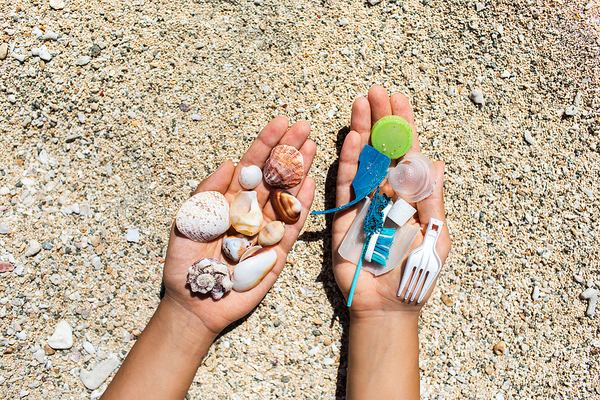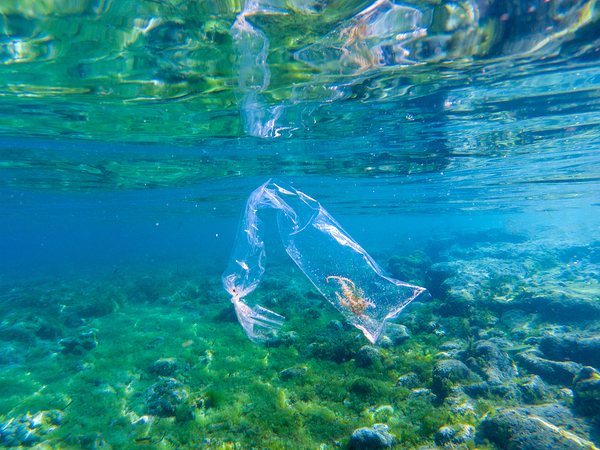
Even though CPG brands and many countries are moving towards single-use plastics, pollution remains a significant issue. According to one source, plastic pollution in our oceans is set to triple by 2040. What can businesses do differently?
New Study Shows Single-Use Plastics Clogging Oceans
Eight million metric tons of plastic waster enter the oceans each year, according to Scientific American. Sealife, like fish, whales, and turtles, eat the plastics and die. Others end up with microplastics in their systems that enter the food chain and negatively impact human health.
The latest data shows the global consumption of single-use plastics worsened during COVID-19. Unless something changes, plastic pollution flowing into our oceans will triple in the next 20-years.
Most recently, our oceans have been inundated by plastic gloves and facemasks in addition to the detritus from CPG packaging. While we thought the environment was getting a big break by slowing the pollution from millions of cars commuting to work, it seems COVID-19 caused the use of 129 billion face masks and 65 billion gloves each month since the virus took hold. Where does that run-off settle? The oceans, of course. It’s an untenable and heart-wrenching situation.
Takeout food containers and online delivery packaging make up a significant portion of what’s clogging our landfills today. U.S. News & World Report promises that if no action is taken to stop the problem, the amount of solid waste going into the ocean will increase from 11 million tons each year to 29 million. By 2040 that waste will be “the equivalent weight of three million blue whales.”
What can be done to stop this?
CPG Packaging and Single-Use Plastic

One big problem has been the amount of plastic produced for CPG packaging. Organizations have been fighting to find alternatives, and even big plastic manufacturers like Chevron Phillips Chemical, Dow, and ExxonMobil pledged to clean up this waste.
The latest research argues for more government control, but most industries, including plastic manufacturers, are against this idea. U.S. News & World Report says Coca-Cola, Nestle, PepsiCo, and Unilever are some of the worst culprits; all have vowed to improve.
Part of the problem now is that, when the oil market collapsed, plastic became more economical to use. When you compare plastic CPG packaging to sustainable packaging, the pricing disparity between doing the right thing and losing your shirt caused many companies to go backward on sustainable CPG packing initiatives. Scientific American says, “To be financially competitive in the marketplace, it is now extremely advantageous to package your goods in newly made, cheap virgin plastic.
Further, Scientific American says, “Recycling systems around the world are starting to break down because of COVID-19 budget strains.” There are about 9,000 recycling facilities in the U.S. today, but only about 10% of CPG packaging gets recycled. These facilities are most often tied to local budgets, which have stalled in 2020. Outside the U.S., plastic is handled in big open-air dumps that eventually end up in rivers and oceans.
This makes it imperative for CPG packaging experts to encourage companies to continue to pursue their sustainability plans. Not only do consumers want this, but they also continue to make buying choices that include these products.
PKG Brand Design is always on the forefront of new CPG branding and packaging initiatives; please subscribe to our blog for the latest package design industry news!







